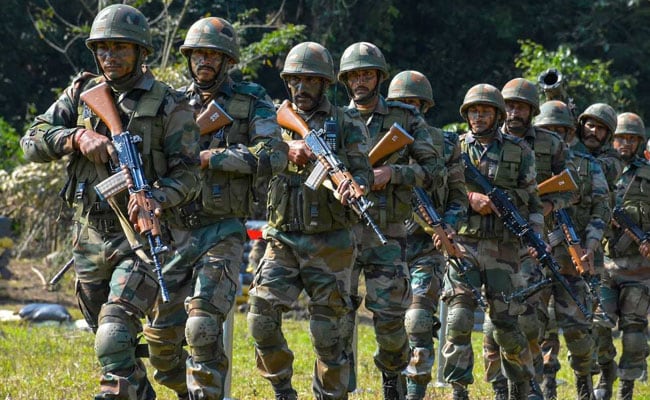India has quietly kicked off a major combat exercise to test its new integrated battle groups (IBGs) for mountain warfare in Arunachal Pradesh, even as China showcased its military drill with strategic bombers, fighters, supersonic drones and the world’s longest range inter-continental ballistic missile Dongfeng-41 at its 70th anniversary parade at Beijing on Tuesday.
Sources said the month-long “Him Vijay” drill exercise, which is being held away from the line of actual control with China, is geared towards converting the new 17 “Brahmastra” Corps into “a lean and mean force” for “swift attacks” in a dynamic operational scenario as well as “creating vulnerable contingencies for the enemy in multiple valleys” in the mountainous region.
The three IBGs, carved out of the 17 Corps with around 5,000 soldiers each and a mix of tanks, light artillery, air defence units, signals and other elements, will be exercising in conjunction with IAF’s C-17 Globemaster-III, C-130J Super Hercules and AN-32 aircraft as well as helicopters for airlift of soldiers and equipment as well as rapid inter-valley transfers.
The Him Vijay drill exercise will be in full throttle when Chinese President Xi Jinping is expected to visit India later this month for the second informal summit with PM Narendra Modi at the seaside resort of Mamallapuram, near Chennai, as was reported by TOI in September.
While the IBGs of the 17 Corps, headquartered at Panagarh under the Kolkata-based Eastern Command, are being test-bedded in the ongoing exercise, the IBGs meant for Pakistan were similarly “test-bedded” under the Chandimandir-based Western Command in April-May.
“Each IBG will be configured on three things. One, the nature of threat envisaged in an area. Two, the type of terrain involved. Three, the task that will be given,” said a source. In effect, the IBGs for Pakistan will be focused more on tanks and heavy artillery, while the ones for China will revolve more around infantry and light artillery due to the differing terrains.
The ones under the 17 Corps, for instance, will have Chinook heavy-lift helicopters swiftly transporting M-777 ultra-light howitzers to forward and high-altitude areas with China. IAF has started inducting 15 CH-47F Chinooks in a Rs 8,048 crore deal inked in September 2015, while Army is getting 145 M-777 howitzers under a Rs 5,000 crore deal inked with the US in November 2016.
“The entire concept of IBGs is based on the need to have leaner and meaner forces that can operate and execute tasks faster. There is the `Cold Start’ doctrine but the existing formations are somewhat heavy. If you want to achieve surprise, you must go faster,” said another source.
This has led to “a mid-course correction” in raising of the 17 Corps, which began in January 2014 to acquire “quick-reaction ground offensive capabilities” for the first time against China because the Army’s existing three “strike corps” were largely geared towards Pakistan.
With two high-altitude infantry divisions as well as armoured, artillery, air defence, engineer brigades spread from Ladakh to Arunachal, the 17 Corps was to be fully formed with 90,274 soldiers at a cost Rs 64,678 crore by 2021. “But the raising has been slowed down because of the new concept of IBGs as well as a fund crunch,” said another source.




